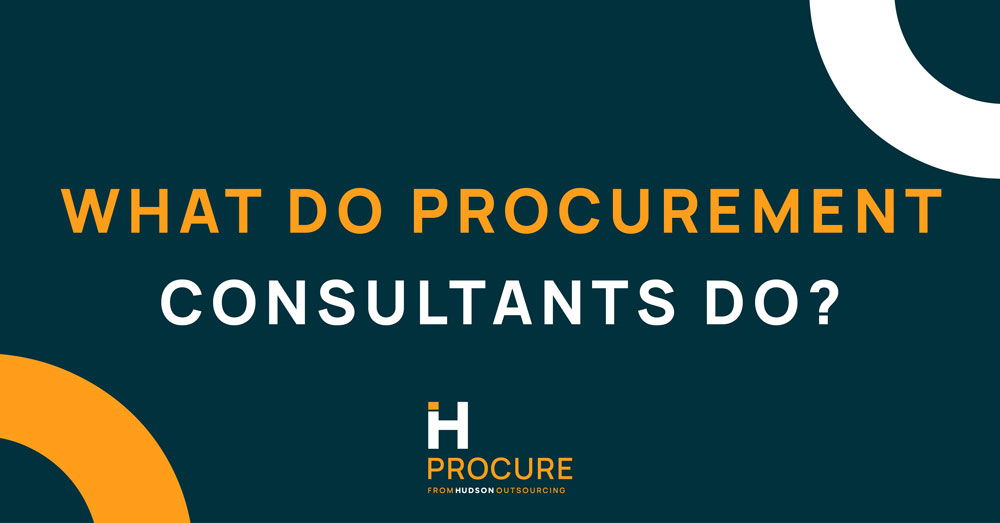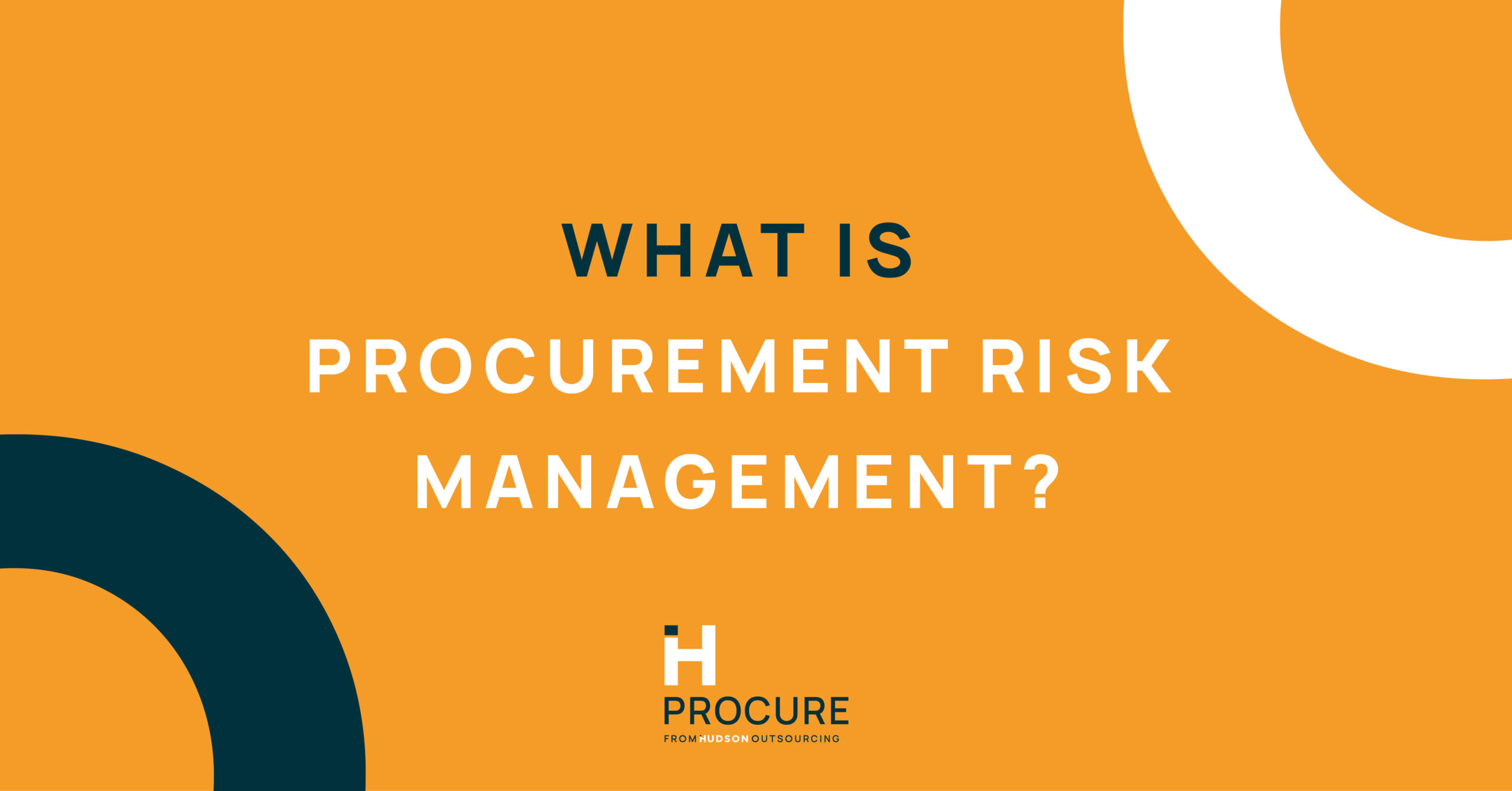Supplier’s Common Pitfalls: A Buyer’s Guide to Perfecting Your Procurement Strategy
Do you have an effective procurement strategy?
Tendering can often be difficult, stressful and time-consuming for businesses. Having a procurement strategy that fails to grasp all aspects of tendering is guaranteed to be off-putting to buyers.
Have you proofread all of your content? Have you attached that vital policy? Is formatting consistent throughout all responses? Suppliers commonly fail to address this in their procurement strategy which reflects disorganisation and incapability to deliver the services. Having a procurement strategy in place will help your business see consistent growth and help tackle the often-intimidating tendering process.
Here at Hudson Procure, we want to help buyers and suppliers alike! We have experience on both sides of the table – buy and supply. So, our procurement experts have put together a handy guide to help businesses improve their procurement strategies.
What are the most common mistakes?
The common pitfalls in the supplier’s procurement strategies are as follows:
Failure to read the specification
Reading the specification in great detail is key to any successful procurement strategy. Buyers can be very specific in their requirements, and it is essential for any successful response to encapsulate these demands.
Common mistakes made:
- Suppliers often fail to fully digest the buyer’s specification in their procurement strategy. As a result, responses can be superfluous, irrelevant and fail to address the key requirements of the buyer.
- Suppliers can often fail to include key information within their responses that are outlined within specifications. Specification documents can be long, and these requirements may often only be stated once.
- Ultimately, failing to fully digest a specification may result in you submitting a response you are incapable of delivering. Often times, suppliers will submit responses without having the necessary experience and skills to deliver the contract. This is key to any successful procurement strategy – that is, knowing what contracts are right for your business. Going for contracts which require three examples when you only have one can be a waste of time and effort.
What buyers are looking for:
- Buyers look for answers that evidently reflect the requirements set out in the specification. They are looking for clear, concise and specific responses that show research and willingness to reflect their aims.
- Buyers look for you to demonstrate your capability to deliver their specific requirements, backed up by relevant skills and experiences. Shredding the specification properly ensures you are capable of delivering to all aspects of the contract.
Time management
Managing your time effectively is an essential part of any successful procurement strategy. Tenders can range from all different scopes and sizes.
Common mistakes made:
- Suppliers tend to leave a lot of work to the last minute, which is evidently reflected in the responses provided. Procurement strategies that fail to manage time effectively result in vague responses that often do not reflect the buyer’s requirements.
- It is common for buyers to ask you to attach certain policies, CVs, accreditations and licenses with your responses. Suppliers who leave everything to the last minute often tend to overlook this and submit responses which lack requirements.
What buyers are looking for:
- Buyers are looking for suppliers who can show evidence of efficiency in time management. Having an efficient, well thought out procurement strategy will be reflected in the responses you create. The more detailed and thorough you are, the more chances of success.
- Buyers are looking for responses that stand out and go above and beyond their expectations. A procurement strategy that leaves everything to the last-minute produces basic, vague responses. Your competitors who have spent sufficient time in their procurement strategies are bound to overshadow you.
Proofreading
One of the key mistakes in tendering is failing to proofread the content you produce. Rushing work can often lead to mistakes in spelling, grammar and punctuation, making your work look sloppy and unprofessional. Procurement strategies that fail to include sufficient time to proofread responses can be catastrophic to the overall submission.
Common mistakes:
- We are all human and we all make mistakes with our writing. However, failing to proofread content prior to submission will result in a response that fails to accurately reflect your abilities. As a result, you will stand out for all the wrong reasons.
- Proofreading doesn’t just boil down to spelling, grammar and punctuation. The content within your submission also needs checking for relevance, specificity and quality. Often times, suppliers will submit responses without having checked to see if their response reflects the buyer’s requirements.
- Formatting is key here, too. Procurement strategies which fail to include proofreading often stand out and can be evident to buyers. Incoherent sentences, misaligned bullet points, paragraphs and inconsistencies all stand to worsen your chances. No matter how good the content, if your formatting is off, your response will be poor.
What buyers are looking for:
- Buyers are looking for responses with no spelling mistakes, good grammar and correct formatting. Remember, this needs to be consistent throughout the entire submission.
- Buyers are looking for formatting that flows nicely and is appealing to the eye. As simple as this sounds, formatting that is messy reflects poor proofreading skill and will reflect badly on your organisation. It suggests to the buyer that you haven’t allocated enough time to this process in your procurement strategy.
Incorrect formatting
Formatting is vital for producing good tender responses and should be a key aspect of every supplier’s procurement strategy. Whilst this may sound simple, everyone makes mistakes, and tenders can often be particularly lengthy. In fact, some ITTs and RFPs could exceed well over 10,000 words.
Common mistakes made:
- Suppliers often submit responses with inconsistencies throughout. It is a common occurrence to see different font types, sizes and sometimes even colours. This comes down to inefficient time management and a poor procurement strategy, and results in unappealing, messy tender submissions.
- It is common also for suppliers to submit responses with bullet points and paragraphs misaligned. Yet again, this may sound simple. However, when you are submitting responses which exceed 10,000 words, this can easily be overlooked. Again, spending enough time in your procurement strategy to go over everything will ensure that all formatting is consistent throughout.
What buyers are looking for:
- Consistency is key here. Your formatting must be consistent throughout and be appealing on the eye. Procurement strategies that fail to address correct formatting will be unappealing to buyers.
- Buyers can often specify certain formatting. For example, buyers may stipulate certain styles or submission guidelines. Ensuring all content adheres to this is vital to your procurement strategy.
Missing key dates
Having a procurement strategy that includes ‘tender timetables’ is key. It’s vital to any procurement strategy that you keep on top of all key dates. Whether that be interviews, site visits or presentations, these all act to strengthen your submissions. Failure to attend can result in you being rejected from the procurement process.
Common mistakes:
- Missing site visits is a common mistake in procurement strategies. Buyers may be looking for a key piece of information which was revealed at the site visit. If this information is missing, it will be obvious to the buyer that the supplier failed to attend the site.
- Suppliers often create responses which are successful. However, failing to keep up with key dates may result in you failing to attend vital presentations or interviews. All of which result in an unsuccessful procurement strategy.
- Suppliers will often fail to keep up to date with correspondence on buyer portals or via email. Failing to notice this may result in you being discounted from the procurement process. However, implementing a procurement strategy that regularly checks all correspondence will ensure this is covered.
What buyers are looking for:
- Buyers are looking for responses that show an organised and efficient procurement strategy. Demonstrate that you have picked up on key information from site visits and have kept up to date with correspondence. This will show that you are organised and efficient.
- Buyers are looking for suppliers who are willing to attend all site visits and presentations. It is key for suppliers to show their willingness to go above and beyond in reflecting the buyer’s requirements. Therefore, attending site visits and presentations will help suppliers stand out from the competition.
How can Hudson Procure help your business?
At Hudson Procure, our procurement experts have nearly two decades of experience. No matter what kind of support you’re looking for, we can help.
Procure Consult
With Procure Consult, we offer support with tender management and ad-hoc procurement consultancy. Our expert team will manage the end-to-end procurement process or offer assistance with any stage, as and when required.
Procure Health Check
With Procure Health Check, we’ll conduct a full review of the strategic and operational procurement processes within your organisation. We’ll identify the areas that need improvement and help you drive greater value from the procurement process.
Procure Analyse
The purpose of Procure Analyse is to conduct a high-level analysis of your spending activity. We’ll help you understand your current purchasing behaviour and highlight areas that can deliver greater value. Procure Analyse is also offered as part of Procure Health Check or as a standalone service.
Procure Outsourcing
With Procure Outsourcing, we deliver a range of procurement solutions on an outsourced basis, completely bespoke to you. This can range from delivering multiple tender projects as a package to delivering the full procurement function of your organisation.
Procure Post
Are you trying to find a supplier for your project? Post your tendering opportunity onto any of our 11 sector-specific portals for FREE with Procure Post!
Housed by our sister company, Hudson Discover, our portals host thousands of tendering opportunities for organisations of all sizes. We’ll help you identify your requirements and find the most suitable suppliers for your business.
Get in touch for a consultation and find out how we can help your business grow.
Check out our other blogs for further Procurement Insights:









